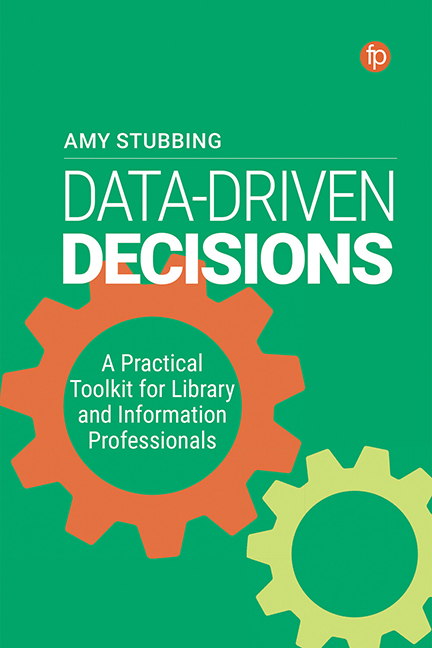10 - Collection Mapping for Collection Management
Published online by Cambridge University Press: 04 August 2022
Summary
Introduction
Using data effectively is a vital aspect of the collection management umbrella. One of the nicest things about using data for collection management is that you are already likely to have access to a lot of readily available data. If you are confident in pulling data from your LMS (or have someone with whom you can work closely to get the relevant data) you can draw information on what materials you have, what subject they’re in, their usage, and location, and more. This strong base of available data can be coupled with additional information from outside sources for more in-depth understanding and decision making for collection and stock management. When harnessed effectively this data can have a significant impact on your collection management practices, collection strategies and stock management practices.
Moving towards data-driven collection and stock management has a variety of benefits. Effective and creative uses of data can enable you to:
• create effective processes for stock and collection management
• plan collection development within the actual needs of the service and institution
• understand your collection and align it with institutional needs
• identify the strengths and weaknesses of your collection.
In Chapter 10 we explore how collection mapping can be used to enhance your understanding and direct your plans for your collection. Collection mapping will help to develop your decision making and should support the development or change of collection development policies and approaches.
Understanding your collection as a concept
We start the chapter by considering your collection as an abstract concept, which isn't nearly as difficult to understand (or explain) as it sounds. The concept of your collection is the overall idea and quality that your collection encompasses. It is essentially the purpose, strengths and direction of your collection. In identifying these things, we can better understand our collection and how it will be used in the future, plan high-level decisions for its development or control, and tie it into wider institutional strategies. One of the most important aspects of really understanding your collection as a concept and these different facets is that you then have a set of guidelines which you can compare your collection against over time to measure its performance. How well your collection is used is after all only one small facet of really understanding how valuable and relevant it is.
- Type
- Chapter
- Information
- Data-Driven DecisionsA Practical Toolkit for Librarians and Information Professionals, pp. 97 - 106Publisher: FacetPrint publication year: 2022
- 1
- Cited by



